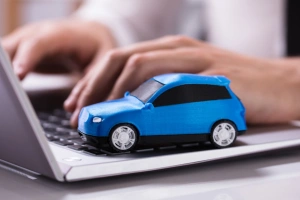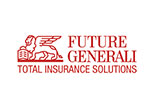How To Protect Your Car During Long-Term Parking
Essential Tips to Keep Your Car Safe and Well-Maintained During Long-Term Parking
As we know every car requires maintenance, but what if the vehicle is not in use for the long term and no one is available to take care of it, in such case the only option is there to park the car in a safe place, however only parking in a secure location is not efficient one has to measure various points required for safe parking for long term.

Importance of Proper Car Storage
Whenever a car is parked in proper car storage, the chance of damage gets reduced, and the fear of mishap is eliminated from the driver's mind.
Common Risks During Extended Parking
Parking lots provide facilities for extended parking, but there are some common risks associated with the same.
Poor Visibility
In parking lots, generally, the lights are dim or poor, which leads to poor visibility and increases the chance of collisions or accidents.
Speeding and Reckless Driving
The parking area restricts the speed limits due to its structure and nature of service; however, sometimes all the drivers do not follow the same, which leads to accidents in parking areas.
Slips, Trips, And Falls
Poorly maintained parking surfaces with cracks, potholes, or uneven paving can cause trips and falls, resulting in injuries.
Criminal Activities
Parking areas that are not under proper surveillance become the hotspots for crimes such as theft, vandalism, or assault.
Weather Conditions
Rain, snow, or ice can make parking lot surfaces slippery for both vehicles and drivers, which can lead to injuries.
Essential Preparations Before Long-Term Parking
It is vital to do essential care of the vehicle before leaving it for long-term parking, some of which are:
Clean and Maintain Your Vehicle
Clean the vehicle and do all the required servicing so that after long-term parking, it can be ready to use.
Wash and Wax the Exterior
Washing and waxing of the exterior is always advisable to protect the paint from dust and grime.
Vacuum and Clean the Interior
The vacuum of interiors removes unnecessary left-out items to avoid unpleasant odors or pests.
Perform Necessary Maintenance
It is essential to perform the necessary maintenance of the vehicle to avoid high costs that can occur after long-term parking due to negligence of maintenance.
Change Engine Oil and Replace Filter
If there is a delay in the change of engine oil, it leads to the formation of contaminants and debris that affect engine performance and start corroding it. Therefore, it is advisable to change the engine oil in case of long-term parking.
Top Up All Fluids
Top up all fluids, such as engine oil, coolant, and brake fluid, at optimal levels to prevent deterioration while the car is idle.
Fill the Fuel Tank
Fill up the fuel tank and add a fuel stabilizer to prevent the fuel from degrading and gumming up the engine.
Prevent Moisture Accumulation
When a car is in parking for the long term, it is necessary to prevent the vehicle from moisture accumulation to protect it from rust.
Add Fuel Stabilizer
Gasoline can degrade over time, leading to gum and varnish buildup in the fuel system. Add a fuel stabilizer to your tank and run the engine briefly to circulate it through the system. This simple step prevents engine damage and keeps your fuel fresh.
Protect the Battery
When you prepare your car for long-term parking, make sure the battery is detached from the vehicle. This is because batteries drain some power when attached to the car, even when it's not in use.
Disconnect or Use a Trickle Charger
Long-term parking may result in dead batteries, and to prevent the same, either disconnect the battery on trickle charger. It provides a steady, continuous flow of power, which keeps the battery alive even when the car is not driven for extended periods.
Clean Battery Terminals
Battery is the most essential part of the car engine, and before leaving the car for long-term parking, it is recommended to clean battery terminals to maintain battery health.
Inflate Tires Properly
Ensure your tires are inflated to the recommended pressure to prevent flat spots from forming due to prolonged immobility.
Prevent Flat Spots
Inflate your tires to the recommended pressure to prevent flat spots caused by prolonged inactivity.
Use Jack Stands if Necessary
If necessary, use jack stands to lift the car slightly, relieve pressure on the tires, and prevent flat spots.
Seal Openings
An unused car, in the long term, attracts rats or insects that may damage the internal wiring to protect the car from blocking the energy points such as the exhaust pipe and air intake.
Cover Exhaust Pipe and Air Intake
A breathable car cover is essential for outdoor and indoor storage. It protects your car from dust, moisture, and UV rays while preventing mold and mildew buildup.
Use Rodent Repellents
Place naphthalene balls or rodent repellents in and around the car to keep pests at bay.
Choosing The Right Storage Location
Whenever it comes to long-term parking, people choose to keep it in a garage or a friend & relative's house; however, using a car storage facility is always a better option than this as it comes with several advantages.
Indoor vs. Outdoor Parking
There are two kinds of parking spaces available. One is indoor, which offers shelter and keeps the car protected from weather-related issues. However, another one is outdoor parking, which is more affordable than indoor parking, with essential security and exposure to the environment.
Benefits of Indoor Storage
There are some benefits of Indoor Storage.
- Indoor storage protects the vehicle from environmental exposure, such as rain, snow, etc.
- Some indoor storage facilities provide climate control facilities that protect cars from extreme temperatures.
- Indoor storage generally has better security arrangements such as 24/7 camera surveillance, security guards, proper door locking systems, etc. It is ideal for expensive cars and long-term storage, I.e., for months to years.
Considerations for Outdoor Parking
Everyone can't afford indoor storage. In such cases, outdoor storage can be opted for.
- Outdoor storage is budget-friendly.
- Outdoor storage generally provides 24/7 access, which can be ideal for trucks and trailers.
- Outdoor storage can accommodate heavy vehicles as well.
Ensure Proper Ventilation
While opting for any storage, it is essential to ensure that there is proper ventilation as this removes pollutants, such as carbon monoxide, that can accumulate from the exhaust fumes vehicles emit.
Prevent Moisture Build-Up
Moisture prevention build-up is required to be checked while choosing parking storage as exposure to moisture in the long term will damage the car.
Avoid Stagnant Air
In parking spaces, it is necessary to check air flow as stagnant air can be there, which does not move or circulate effectively. It lacks the required airflow to replenish itself, leading to a build-up of pollutants, humidity, and temperature imbalances.
Using Protective Covers And Accessories
Car covers play an important role in protecting the car body from dust, wind, scratches, dents, etc, and it is essential to choose the right cover. The following things should be kept in mind while selecting a car cover.
Selecting a Suitable Car Cover
The selection of a car cover should be based on the user's requirements, as this comes in many categories, such as breathable covers, waterproof covers, and outdoor or indoor-specific covers.
Material and Fit
Since car covers come in various materials such as polypropylene, polyester, nylon, etc., with separate sets of features and every car has a different fit, it is required to choose the correct material and fit.
Indoor vs. Outdoor Covers
If you cover the car from the outside, it doesn't mean the inside of the vehicle is completely protected. Indoor covers are designed to prevent the particles from setting on and protect against accidental bumps and scratches that can happen even in closed spaces. At the same time, the outside cover protects the car from dust, light, water, etc.
Utilizing Desiccants
Utilizing desiccants in car helps in multiple ways:
Absorb Moisture Inside the Vehicle
It absorbs the moisture and humidity levels in various components and spaces, such as the air conditioning system, electrical boxes, trunk, and passenger cabin.
Prevent Mold and Mildew
This helps prevent corrosion, mold, and mildew growth and ensures the efficient operation of vehicle systems.
Security Measures
While parking a car for the long term, some security measures need to be checked.
Park in a Secure Location
Park in a secure parking space about which required research and development has been done.
Well-lit and Monitored Areas
Park in a clean and CCTV surveillance area to ensure nothing mishap can be done.
Use of Steering Wheel Locks
Lock the steering wheel as a measure against theft and potential accidents caused by the vehicle rolling off.
Inform a Trusted Person
It is also essential to inform any trustworthy person available in the town about car parking to get the updates:
Regular Checks on the Vehicle
Ask for regular checks on the vehicle every week or every 2-3 weeks to see if everything is okay.
Immediate Reporting of Issues
If any mishap with the vehicle is observed, ask for immediate reporting to the authorized person.
Post-Storage Checklist
When the parking period is over, the following things need to be checked before taking the handover:
Inspect the Vehicle
Inspection of the vehicle is the first thing to do where the following things need to be checked:
Check for Pests and Damage
Check if there is any damage or if any insects or rats are found that could have damaged the internal wiring.
Examine Fluid Levels
Examine the fluid levels to ensure that no one appropriately uses the vehicle.
Reconnect the Battery and Remove the Covers
Reconnect the car battery and remove the indoor-outdoor covers to start the car.
Reattach Battery Terminals
Reattach the battery terminal and start the car to see if the battery is running well or not.
Remove Protective Covers
Remove the protective car covers and check for scratches or dents, if any, which were not there earlier.
Test Drive
The most crucial part is a test drive to see the actual condition of the vehicle.
Assess Vehicle Performance
Take a test drive and assess the vehicle's performance to see if it is the same or degraded.
Listen for Unusual Sounds
While taking a test drive, it is also required to pay attention to unusual sounds, if any, to recognize the problem that may have arisen out of long-term parking.
Final Tips for Long-Term Car Parking
For long-term parking, the following tips should be followed:
-
Analyze the common risks that may occur in long-term parking
-
Take the preventive measure to avoid such risk
-
Be updated about car position on a timely basis.
-
Check out the car before taking handover to ensure that the car is in the same status as before.
Conclusion
Cars are always expensive assets, and taking the proper car is your responsibility; however, if a person is not available to take due care of the car, you should definitely opt for the parking option to keep it secure and safe. Key steps for long-term parking are to choose the correct parking and follow the safety measures to avoid damage to the car.
FAQs
-
What is long-term parking?
Long-term parking is the parking of a car in a specific location for a more extended period than usual; it can be either a week, a month, or a year.
-
Is parking in a parking lot safe?
Parking in the parking lot is safe depending upon its management; proper research and development should be performed before choosing the parking space in case of long-term parking.














































